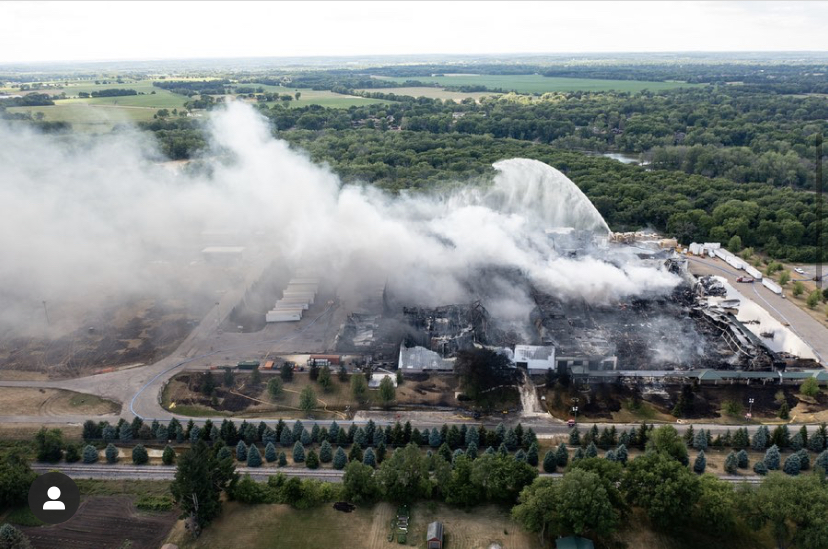
Photo courtesy of Matthew Ames (@spyderman83.1 on Instagram)
On June 14, the Chemtool lubricant factory in Rockton, Illinois, caught fire, causing an explosion that sent black ash into the air and resulted in the evacuation of all residents within a one-mile radius. What’s more, the company choose to fight the fire with foam that contained the highly persistent and toxic chemicals known as per- and poly-fluoroalkyl substances (PFAS), sending unknown quantities of the chemicals into the nearby Rock River.
In the aftermath of the fire, Sierra Club test results from a nearby river showed levels of PFAS contamination that were much higher—and more dangerous—than those found by the state. How did this happen, and why are agencies still using toxic PFAS firefighting foam? Let’s look at this disaster in more detail, and explain how you can help.
As the chemical fire raged on at the Rockton facility, emergency responders weighed their options. Town residents weren’t allowed to return to their homes until the smoke had dissipated. Fire officials raised concerns about fighting the fire with water and industrial firefighting foam, given the chemical facility’s proximity to the Rock River. In a press briefing on the morning of June 15, the Rockton fire chief cautioned, “If we let product go into the river, I think we'd have more of an environmental impact, and more of a nightmare, than this actual fire.”
Despite these concerns, Chemtool’s parent company, Lubrizol Corporation, contracted industrial firefighting company US Fire Pump, which sprayed 3,200 gallons of PFAS-based firefighting foam concentrate onto the fire the same afternoon. Over the course of three hours, 74,000 gallons of water mixed with PFAS were used to extinguish the blaze. Once Illinois and the US EPA raised concerns, a PFAS-free foam was used to extinguish the blaze.
Testing by the Illinois EPA demonstrates that high levels of PFAS entered Rock River via sewage drains at the Chemtool site. The concentration of PFAS was nearly 6,000 parts per trillion, 50 times higher than upstream sampling sites. Concentrations of a single PFAS chemical, 6:2 FTSA, made up the bulk of this sample. It was also measured at high levels in wastewater collected at the factory site. You can find the Sierra Club’s water testing results and our analysis of PFAS contamination of the Rock River here.
Sierra Club volunteers also collected samples from Rock River closer to the factory and found PFAS levels were about 15 to 24 parts per trillion higher than samples collected upstream of the site. Using a novel chemical test called the TOP Assay, chemists measured a broader number of unidentifiable PFAS-precursors, and demonstrated that the total burden of PFAS in the river is about double the amount measured in standard laboratory analytical tests.
This isn’t the first time that PFAS fire fighting foams have poured into waterways, and it won’t be the last. In 2019, thousands of gallons of foam and waste water flushed from the ITC Tank Farm into the Houston Ship Channel and Galveston Bay.
The use of PFAS in firefighting is responsible for a huge share of drinking water contamination, which is estimated to impact more than 100 million Americans. The chemicals pose a hazard to first responders, and risk harming fish and wildfire and permanently contaminating groundwater and rivers. PFAS-free foams are available, widely used outside the US, and were actually successful in suppressing the Rockton fire. So why are these toxic products still used in emergency response?
Eight states, including Illinois, have enacted laws to phase out the sale and use of PFAS in firefighting foam. Congress has directed airports and the military to study and adopt alternatives within the next few years. EPA Administrator Micheal Regan has pledged to do everything possible to address the crisis of PFAS contamination; it’s clear that an important part of the process will be further restricting the use of PFAS in firefighting, and holding industries responsible for the contamination they cause when fighting a fire.